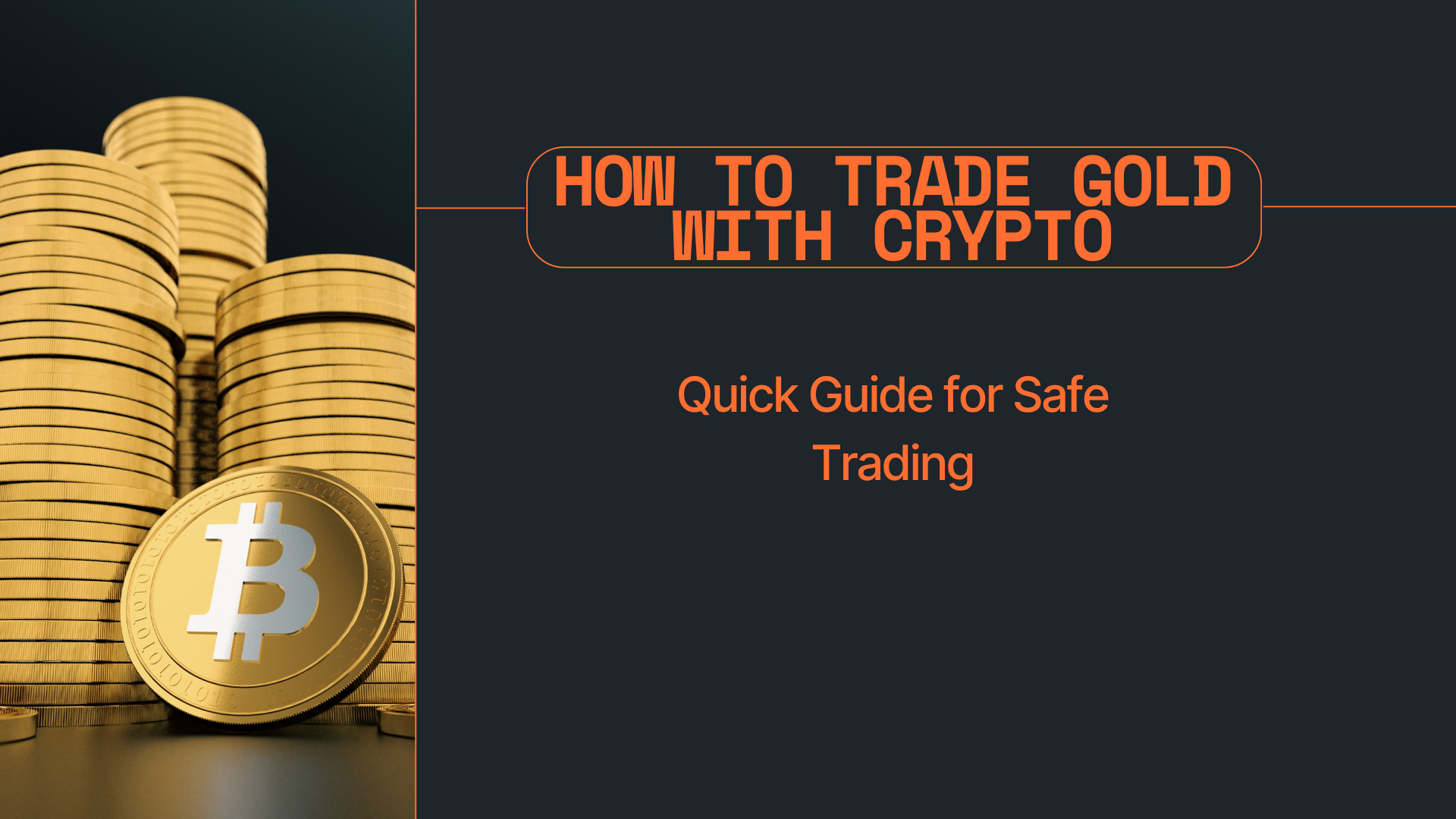
Introduction: Gold and Crypto—A New Trading Frontier
In the ever-evolving world of digital assets, one trend gaining momentum is the ability to trade gold with crypto. For centuries, gold has symbolized wealth and financial security. Today, it finds a new home on the blockchain, where it meets the flexibility and speed of cryptocurrencies. This synergy offers investors a way to combine the stability of gold with the innovation of crypto.
This guide will walk you through how to trade gold using cryptocurrencies, the platforms you can use, and the key safety and regulatory considerations every investor should know.
Why Trade Gold With Crypto?
Diversification
Gold and crypto are considered uncorrelated assets, meaning they often move independently. Holding both can help investors hedge risk during volatile market conditions.
Liquidity and Speed
Traditional gold markets operate during business hours and often involve intermediaries. With blockchain-based gold trading, investors gain 24/7 market access with near-instant settlements.
Fractional Ownership
Tokenized gold allows users to own small fractions of gold bars—something difficult in traditional markets, making it more accessible to retail investors.
What is Tokenized Gold?
Tokenized gold refers to digital tokens backed 1:1 by physical gold stored in secure vaults. These tokens live on a blockchain and can be traded just like any other cryptocurrency.
Popular Tokenized Gold Assets
- Tether Gold (XAUT): Each token represents 1 troy ounce of gold held in a Swiss vault.
- PAX Gold (PAXG): Issued by Paxos Trust, this token is backed by gold stored in LBMA-approved vaults.
- AurusGOLD (AWG): Backed by physical gold, with built-in yield-generating features for holders.
Step-by-Step: How to Trade Gold With Crypto
Step 1: Choose a Trusted Exchange
Look for a regulated cryptocurrency exchange that supports tokenized gold assets. Examples include:
- Binance
- Kraken
- Bitget
- Bitfinex
- Bybit
Check for trading pairs like BTC/XAUT or ETH/PAXG.
Step 2: Fund Your Account
Deposit cryptocurrency (like BTC, ETH, or stablecoins) into your account. Some platforms also accept fiat for gold token purchases.
Step 3: Analyze Market Conditions
Use charting tools like TradingView, or rely on the exchange’s built-in analytics to assess trends, support levels, and resistance zones.
Step 4: Place Your Order
You can place a:
- Market Order for instant execution
- Limit Order to buy/sell at a specific price
Don’t forget to set a stop-loss to manage risk in volatile conditions.
Step 5: Secure Your Assets
Once you’ve made your trade:
- Consider transferring gold tokens to a non-custodial wallet like MetaMask.
- Ensure the wallet supports ERC-20 tokens (most gold tokens are Ethereum-based).
Top Platforms for Gold-Crypto Trading
| Exchange | Token Supported | Notable Features |
| Binance | PAXG, XAUT | Deep liquidity, low fees |
| Bitfinex | XAUT | Fiat and crypto pairs |
| Kraken | PAXG | Regulated, advanced tools |
| Uniswap | PAXG | Decentralized, ERC-20 support |
| Bybit | PAXG | Copy trading, fast execution |
How Safe Is Tokenized Gold?
Asset Backing
Trusted issuers like Paxos and Tether provide transparency reports and third-party audits, verifying that every token is fully backed by real gold.
Storage
Gold is held in secure, insured vaults, often in jurisdictions like Switzerland or London. Investors can even redeem their tokens for physical gold (though often with fees).
Smart Contract Risk
As with any crypto asset, tokenized gold carries smart contract risks. Only trade assets audited by reputable security firms.
Pros and Cons of Trading Gold With Crypto
Pros
- Global access with no geographic restrictions
- No need for bank intermediaries
- Fast transactions and settlement
- Lower fees compared to traditional brokers
Cons
- Smart contract vulnerabilities
- Limited redemption options
- Regulatory uncertainty in some jurisdictions
Legal and Regulatory Considerations
KYC/AML Requirements
Even if you use decentralized platforms, trading tokenized gold may still require identity verification. This is especially true if the issuer operates in a regulated jurisdiction.
Tax Implications
In many countries, gold is classified as a collectible or capital asset. Consult a tax professional to understand how gains from gold-backed tokens are taxed.
Sanction Compliance
Always ensure the platform you use is compliant with sanctions laws, particularly if you’re trading from restricted regions.
Future of Gold-Crypto Integration
Central Bank Interest
With countries exploring CBDCs, tokenized commodities like gold may eventually become part of centralized financial instruments.
DeFi Integration
Projects like Aurus are exploring ways to include tokenized gold in yield farming, staking, and lending platforms.
Cross-Chain Assets
Expect to see tokenized gold become multi-chain compatible, with support beyond Ethereum—e.g., Solana, Polkadot, and Layer 2 solutions.
Tips for Beginners
- Start small: Use a small allocation of your portfolio to test tokenized gold before scaling.
- Use reputable wallets: MetaMask, Ledger, and Trust Wallet all support tokenized gold.
- Track performance: Use portfolio trackers like CoinStats or Zapper to stay informed.
Conclusion: Is Gold-Crypto Trading Right for You?
Trading gold with crypto offers a modern, flexible, and accessible alternative to traditional commodities investing. Whether you’re a gold enthusiast or a crypto-native looking to diversify, tokenized gold provides a bridge between two powerful asset classes.
But like any investment, do your research, evaluate risks, and use trusted platforms. The combination of digital innovation and age-old value makes this an opportunity worth exploring—safely and smartly.